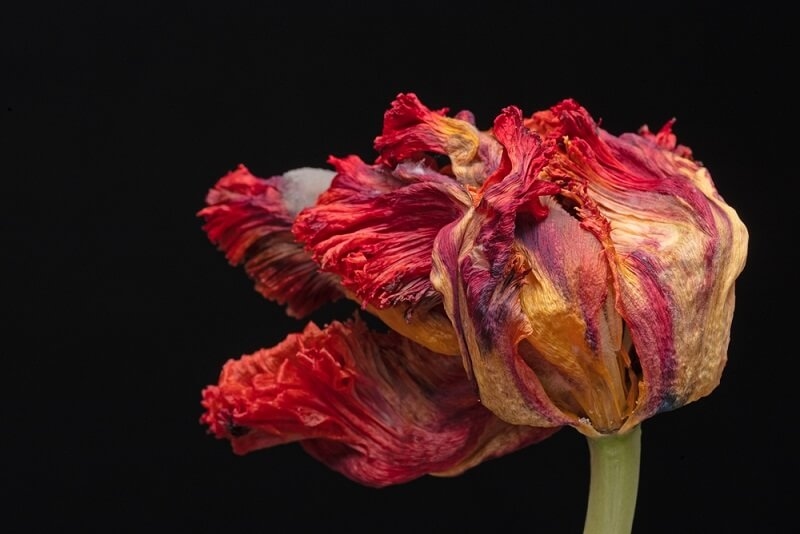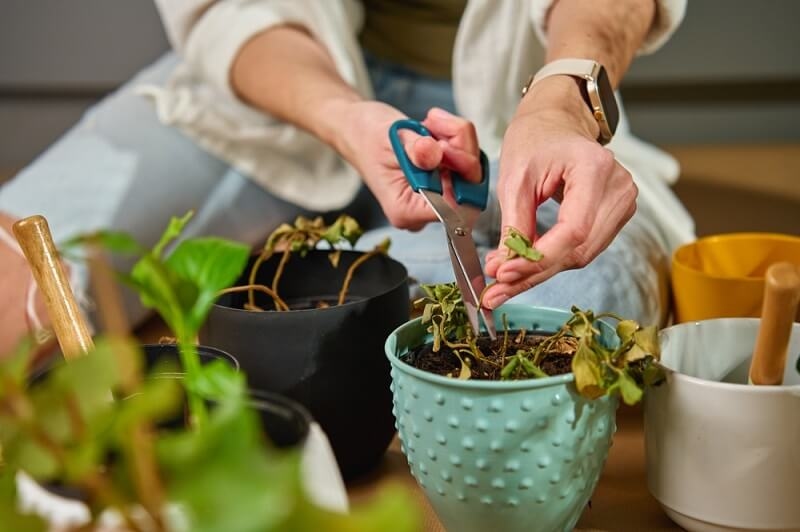How to Revive Wilted Flowers and Bring Them Back to Life?

Flowers carry freshness, pleasure, and beauty into any area; however, searching for them can be disheartening when they wilt too fast. The correct facts are that knowing the way to revive wilted plant life lets you breathe life again into your favourite bouquets. Whether you want to repair drooping roses, bring hydrangeas back to life, revive a tulip bouquet, or sincerely learn how to perk up flowers fast, there are practical, demonstrated guidelines that could make your blooms look sparkling over again. Even if you suppose it’s too past due, there are ways to keep nearly lifeless flowers with the proper care techniques.
Why Do Flowers Wilt?
Before studying a method to revive wilted plants, it’s essential to understand why they wilt in the first place. Flowers naturally lose water through their petals and stems; however, they wilt if they cannot replenish it fast enough.
Common Causes of Wilting:
- Lack of water or clogged stems prevents absorption.
- Exposure to heat or direct sunlight during the day.
- Bacteria assemble within the vase of water.
- Incorrect stem trimming blocks hydration.
- Natural growing antique flowers.
By addressing those problems early, you may increase the lifespan of your blooms and keep them radiant for days longer.
Quick Fixes: How to Perk Up Flowers Quickly
Sometimes you need a quick solution—site visitors may arrive; otherwise, you want your bouquet to look smooth again. Here are some right away treatments on the way to sit up straight, plant life brief:
- Re-cut the stems: Trim at least one inch at a 45-degree angle underneath running water. This eliminates clogged tissue and improves water intake.
- Use warm water: Place vegetation in warm water for better absorption.
- Add flower meals: A sugar blend and a few drops of bleach can mimic industrial flower preservatives.
- Mist the petals: Hydrating from above facilitates perking up flowers speedily.
- Remove wilted leaves: Excess foliage in water encourages microbial growth.
These techniques are helpful in case your bouquet has started out wilting but has hundreds of lives left.
Revive Drooping Roses: Step-by-Step

Roses are iconic; however, they’re also notorious for drooping upfront. If you’re seeking to revive drooping roses, right here’s what works fantastically:
- Trim the stems beneath water: Cut at an angle to allow roses to draw in maximum water.
- Submerge in lukewarm water: Fill a sink or bucket with water and submerge roses completely under water for half an hour. This will rehydrate the stems and petals.
- Try the boiling water trick: Put the stems in a vase with warm (not boiling) water for about 10 seconds, then rotate to chill the water. This can bring the roses back to life again.
- Remove outer petals: Gently pluck off protective petals to give roses a fresher look.
- Keep cool: Store revived roses away from direct sunlight and heat.
Following these procedures, you could enjoy your roses for several more days.
Bring Hydrangeas Back to Life
Hydrangeas are lovely; however, they’re also exceptionally touchy to dehydration. If you want to carry hydrangeas returned to life, strive for those strategies:
- Soak the whole flower head: Place wilting hydrangeas the wrong way up in a water bowl for 30–45 minutes. Their petals absorb moisture right now.
- Cut stems in warm water: Use sharp scissors to reduce them, then place them in warm water for a quick revival.
- Mist generously: Hydrangea petals drink via their leaves, so spraying them with water can restore plumpness.
- Remove wilted blooms: Pruning off susceptible flora permits the plant to focus its energy on extra healthy ones.
Hydrangeas are among the simplest plants to restore, regularly bouncing back within hours of proper care.
Revive a Tulip Bouquet with Ease
Tulips will be inclined to hunch over quickly; however, with the proper tips, you may revive a tulip bouquet and make it stand tall again:
- Wrap in damp paper: Bundle tulips in wet newspaper or paper towels, then submerge them in cool water for a few hours. This facilitates their rehydration and regain of firmness.
- Trim stems immediately: Unlike one-of-a-kind plants, tulips respond better to immediate cuts in the location of angled ones.
- Use bloodless water: Tulips opt for chillier environments, so keep the vase cool and add ice cubes to the water.
- Help them: Place tulips in a tall vase to help them stand upright as they recover.
- Keep away from fruit: Ethylene gas from fruit hurries up wilting in tulips.
Your tulip bouquet can appear lively and smooth again within a short time.
How to Revive Wilted Flowers Overnight?
If your plant's appearance is tired at the end of the day, these overnight strategies can assist:
- Deep water soak: Submerge stems and leaves in a bath or big box of lukewarm water. Leave them overnight, and they’ll look refreshed in the morning.
- Cool garage: Place vegetation in the refrigerator for 6–8 hours. The cool air slows down wilting and lets in hydration.
- Change the water: Fresh water prevents bacterial growth, ensuring flowers absorb what they want.
This is one of the most reliable techniques when you’re determined to store nearly useless plants.
Save Nearly Dead Flowers with These Tricks
Please don’t give up when your bouquet seems to be on its final breath. Here’s how you could store nearly useless vegetation and supply them a second risk:
- Cut stems substantially: Shorten them by some inches and re-reduce underwater. This gets rid of the most broken sections.
- Use sugar water: A teaspoon of sugar added to a vase of water offers an electricity-enhancing effect.
- Aspirin answer: Crush one aspirin pill inside the water—this lowers pH levels and continues to clear.
- Vinegar mix: A tablespoon of vinegar prevents bacteria and encourages water uptake.
- Refrigeration trick: Store the nearly lifeless plant life within the fridge overnight for a revival boom.
While no longer can each bloom be revived, these techniques maximize their lifespan and splendor.
Homemade Flower Revival Solutions
You don’t always need fancy flower food. Try these DIY options:
- Sugar vinegar: Sugar feeds the flowers, whilst vinegar reduces microorganisms.
- Soda water: Carbonated liquids with sugar (not a weight-reduction plan) substitute preservatives.
- Bleach drops: A few drops prevent bacterial assembly-up in the vase water.
- Vodka trick: A small amount reduces ethylene gasoline production, slowing wilting.
These solutions are much less high-priced, effective, and clean to make at home.
Preventing Future Wilting
Knowing how to revive wilted plants is treasured; however, prevention is even better. Here’s a way to hold your blooms fresher for longer:
- Trim stems often: Every day, reduce stems at a perspective.
- Replace water frequently: Change the water each day to lessen microorganisms.
- Use easy vases: Wash very well before including flora.
- Remove leaves underneath the waterline: This prevents decay and infection.
- Keep far from warm property: Direct daylight, heaters, or home equipment boost wilting.
By maintaining simple care behavior, your plants will thrive naturally.
Considerations about Seasons of Flower Revival
- Tulips and daffodils in springtime will often want cold water and taller vases for better hydration.
- Summer flowers like roses and zinnias must be cut frequently and kept cooler.
- Chrysanthemums and other fall flowers last longer in sugar water.
Amaryllis and poinsettias like warm temperatures and not too much water in winter. Their care will depend partly on the season, and they will be addressed more appropriately.
Frequently Asked Questions
Q: Can all flowers be revived once they wilt?
- Not necessarily. Some can only be partially revived, completely, depending on their level of wilting and how long it's been since they've wilted.
Q: How long do revived flowers last?
- Depending on the type, if you've taken care of them properly or cut them less frequently, they may last 2 – 5 more days.
Q: Is it ok to keep flowers in the refrigerator?
- However, because it speeds wilting, I would avoid putting flowers in with fruit that gives off ethylene gas, such as apples or bananas.
Q: Is it better for flowers to have warm or cold water?
- It really depends on the flower. For example, roses and hydrangeas do better with warm water, and tulips prefer cold water.
Final Thoughts on How to Revive Wilted Flowers
Learning to revive wilted flora requires endurance, care, and the proper techniques. Whether you need to revive drooping roses, bring hydrangeas back to life, revive a tulip bouquet, or store nearly wilted flora, these techniques can transform worn-out blooms into colourful arrangements again. With smooth hints to sit up straight, flowers, speedy and preventive care, your bouquets can live beautifully longer and keep spreading pleasure.
This content was created by AI

